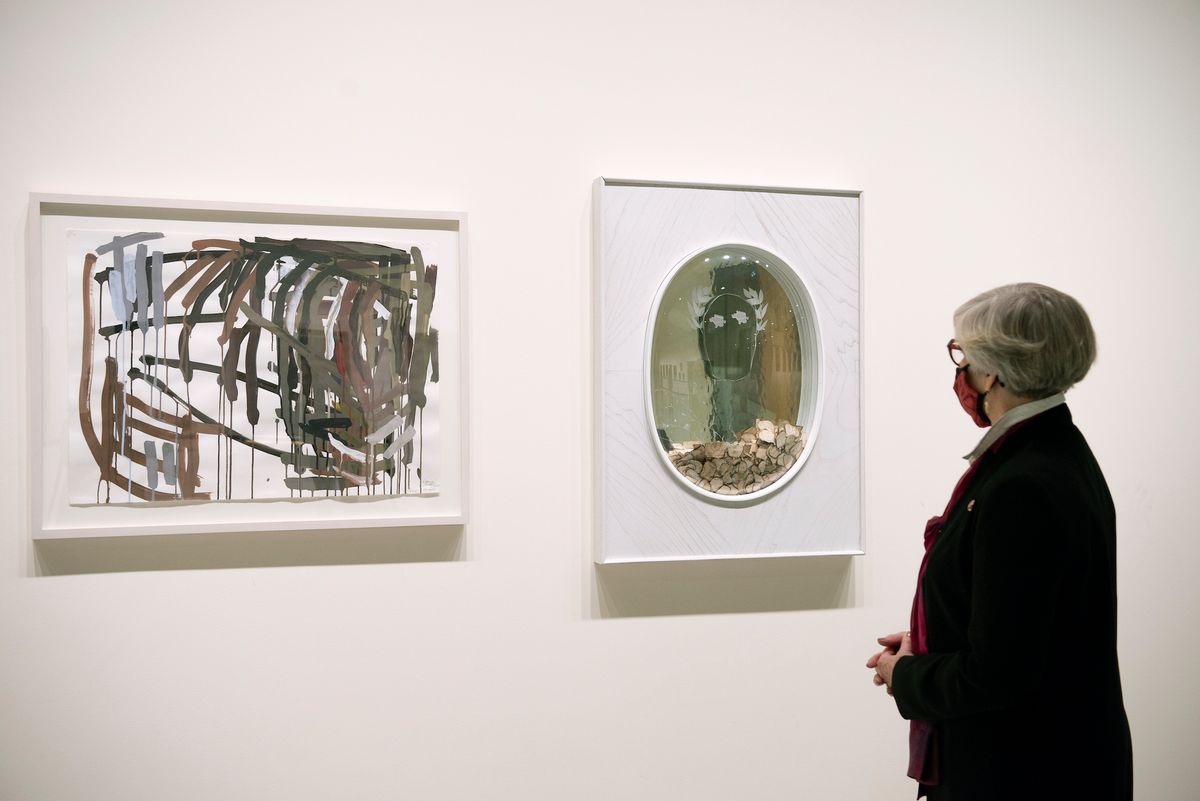Art has a prominent place in Canada’s Senate Building, in its public spaces and committee rooms. The senate’s collection of Speakers’ portraits includes many major Canadian artists and its Indigenous works represent various parts of the country. From different regions and culturally diverse communities, Canadian senators review and amend legislation and undertake studies on pressing concerns, regularly hearing different perspectives. Our first installation of a new project in the Senate of Canada, Honouring Canada’s Black Artists, underlined the urgency of including Black history in Canada’s histories, and in our forward political thinking and deliberations.
Honouring Canada’s Black Artists is now celebrating its second installation in our senate rooms, reminding us daily how important it is that initiatives such as Black History Month should not be relegated to a single month, but incorporated into our lives as a continuous part of our existence. Aiming also to bring the significant accomplishments of Canada’s Black artists to the fore, each installation features two, heralding the substance of their visual expression and contributions to the fabric of Canadian creativity, contributions neither sufficiently included in Canadian histories nor adequately celebrated. Embodying social inclusion, societal cohesion and our historical roots and experiences, these artists also mark significant shifts in the vigorous decolonising conversations taking place.
The first exhibition included two artists from Western Canada. Canadian-born Chantal Gibson, a Simon Fraser University professor, was represented by her 2014 work, Who’s Who in Canada 1927, from her Altered Books series. Yisa Akinbolaji, who immigrated from Nigeria to Manitoba as a refugee in 1997, was represented with his 2018 painting, Stolen Identities.

Vancouver-based artist Chantal Gibson’s altered text Who’s Who in Canada
1927 was installed in the Senate of Canada Building on Friday, September 18, 2020. An e-reader displaying a recording of the book’s original pages is part of the installation. Courtesy and © the Senate of Canada
Gibson cut pages from the 1927 Canadian Who’s Who and filled its cover with interwoven black cotton braids of various sizes symbolising the strong interconnections and contributions of Canada’s Black communities. The accompanying e-reader turns the pages of the original volume, revealing photographs of its “notables”—all white men. Gibson questions how a book can make us think about power and systemic racism, and comments: “Artwork allows us to question power and authority. It asks the viewer to think about whose voices are included in national narratives and whose are omitted or erased.”
Addressing the complexity of cultural identity, Akinbolaji’s work seeks understanding among cultures. It depicts the Manitoba Métis leader Louis Riel in a dreamcatcher that hangs from branches of poplar trees in the middle of a Manitoba forest. Fusing the rich colours and patterns of Nigeria with Canadian historical realities, his rhythmic, recurring circles echo those of the dreamcatcher, effectively bringing diverse cultures together.
Now on view in the senate through the summer of 2022 are works by two Ontario artists: the late Trinidadian-Canadian painter Denyse Thomasos with her acrylic-on-paper Wyoming Saddle (2000), and Tim Whiten with his mixed-media piece Light Laureate (2019-20). Both artists dig deeply into their roots and the psyches of their communities, ensuring their histories are understood.

Senator Bovey oversaw the installation of two works by Black Canadian artists in the Senate of Canada Building Courtesy and © the Senate of Canada
Oppressive systems
Thomasos’s piece is one of eight works stemming from a residency in Wyoming. Her extensive international travels, heritage and research into the effects of oppressive systems on the Black diaspora are all major elements in her art. Her abstracted ribcage motif evokes the themes of slavery and confinement, and the forceful and energetic brushwork enhances the sense of human vibrancy and tenacity.
In Light Laureate, Whiten, referring to himself as an image maker, states: “In close to 40 years creating works, I have sought to navigate the territory of the human condition and its transformative potential. The materials I use are most often presented in reductive and compressed objects, with the intent of inviting experience and encouraging ‘sensing’ over ‘reading.’” His inclusion of a mirror and paper fragments is significant, making us, as Senators and individuals, reflect on the multiple ideas from many elements in Canadian society which, in turn, inform our senatorial work.
Future installations will feature Quebec and Maritime artists, and I hope these exhibitions will draw national attention to the substance and diversity of work by Canada’s Black artists, and ensure their much-deserved place in our nation’s art history and exhibitions as well as our governmental decision-making. May Honouring Canada’s Black Artists and other senate art projects like Cultivating Perspectives and Museums at the Senate, and displays of Indigenous art in the Indigenous Peoples’ Committee Room, together underline the importance of visual voices in portraying cultural ideas, sensitivities and realities as they mirror society and define our humanness and spirit of place.
• Patricia Bovey is a Canadian senator representing Manitoba, the chair of the senate’s artwork and heritage advisory working group and a former museum director


